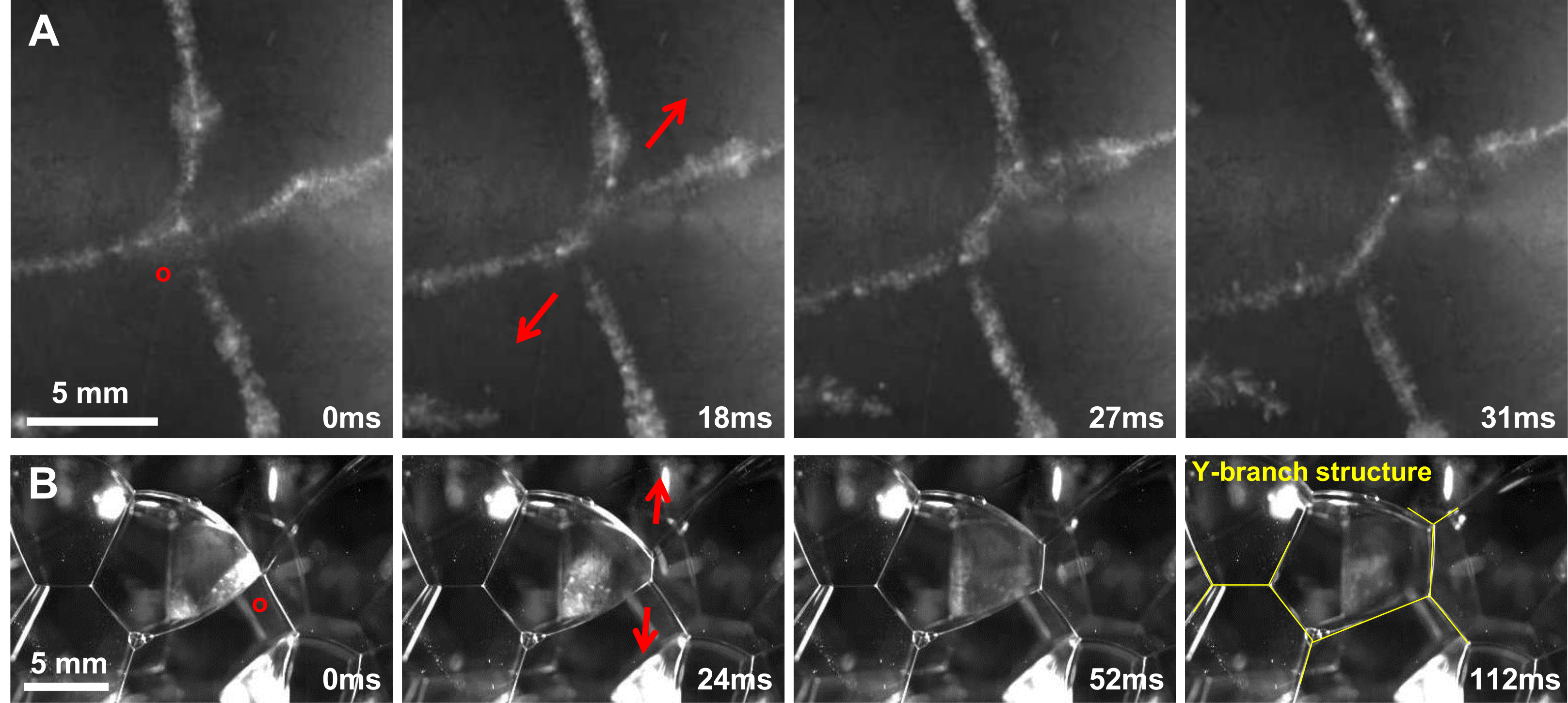Due to its mechanical and chemical effects, cavitation is widely used among many industrial sectors, from ultrasonic imaging and therapy, ultrasonic brazing, ultrasonic lithotripsy, sonochemistry, ultrasonic cleaning, wastewater treatment, to jet cutting.
Each bubble in the cavitation field acts as a single shock wave generator or a sonochemical reactor. Visual observations indicate that cavitation bubbles rarely exist in isolation but in the form of clusters or clouds. Moreover, these bubbles distribute inhomogeneously, thus forming different structures in the ultrasound field. The two-dimensional nature of thin liquid layer brings about some new characteristics to bubbles and bubble clusters.
After investigating the cavitation structures in a thin liquid layer experimentally, researchers BAI Lixin and his colleagues from the Institute of Acoustics (IOA) of the Chinese Academy of Sciences discovered that cavitation structure successively experiences several stages with the change of the thickness of the thin liquid layer, such as spotted structure, disc-shaped structure, rod-shaped structure, and smoker structure.
Rod-shaped structure, a stable feature element, can be formed by the collision of two disc-shaped structures or by the connection of two smoker structures, as figure 1 shows.

Figure 1. Schematic diagram of the mechanism of formation of rod-shaped cavitation structure. (Image by IOA)
Meanwhile, the rod-shaped structures tend to crosslink with each other to form stable Y-branch structures (Figure 2). The angle of the Y-branch structure is Gauss distribution with mathematical expectation μ = 119.93, which is similar to the structure of soap bubbles.

Figure 2. Stability of Y-branch structures. (A) The four-rod cavitation structures intersecting at one point will be split into two Y-branch structures. (B) An analogy with soap bubbles. (Image by IOA)
The inhomogeneous distribution of cavitation clouds in a thin liquid layer is partly caused by, and also responsible for, the uneven distribution of sound field. The cavitation cloud and the sound field interact with each other, but they cannot reach the complete equilibrium, so the shape and position of the cavitation cloud will continue to evolve.
Since the expected distribution of cavitation clouds relates to the distribution of cavitation nuclei, which is associated to the present distribution of cavitation clouds, the cavitation clouds have obvious continuity.
The paper entitled “Rod-Shaped Cavitation Bubble Structure in Ultrasonic Field” was published on Ultrasonics Sonochemistry.
Funding for this research came from the National Natural Science Foundation of China (No. 11674350, No. 51435004, No. 51572271) and National Basic Research Program of China (973 Program) (No. 2016YFA0201500).
Reference:
BAI Lixin, WU Pengfei, LIU Huiyu, YAN Jiuchun, SU Chang, LI Chao. Rod-Shaped Cavitation Bubble Structure in Ultrasonic Field. Ultrasonics Sonochemistry (Volume 44, June 2018, Pages 184-195). DOI: 10.1016/j.ultsonch.2018.02.030
Contact:
WANG Rongquan
Institute of Acoustics, Chinese Academy of Sciences, 100190 Beijing, China
E-mail: wangrongquan@mail.ioa.ac.cn


